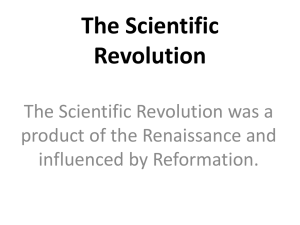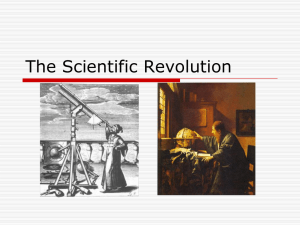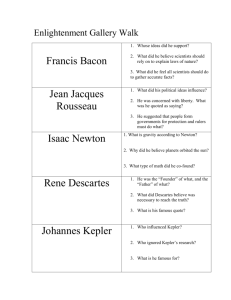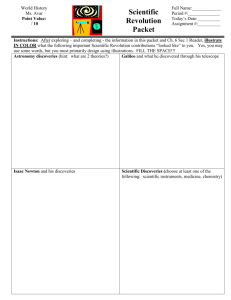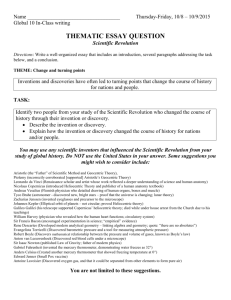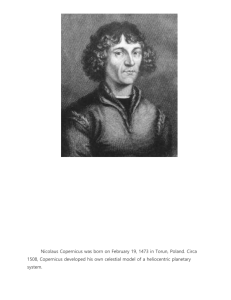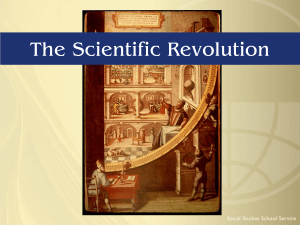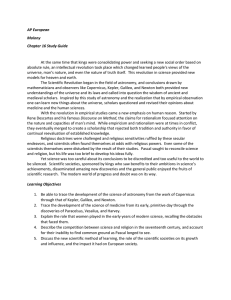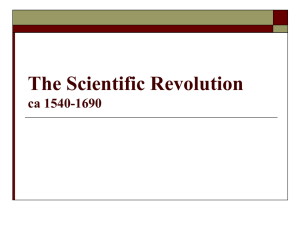22.1 The Scientific Revolution
advertisement
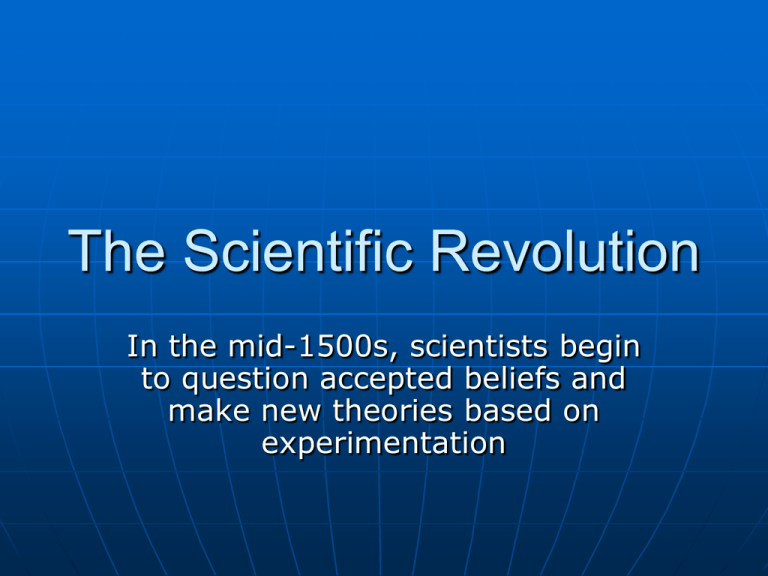
The Scientific Revolution In the mid-1500s, scientists begin to question accepted beliefs and make new theories based on experimentation The Roots of Modern Science The Medieval View • Most knowledge in the Middle Ages comes from the Bible and Greek/Roman sources. • Supports geocentric theory—moon, sun, planets revolve around earth The Roots of Modern Science A New Way of Thinking • Renaissance prompts new ways of thinking (1300-1600) • Scientific Revolution—new way of viewing the natural world—based on observation and inquiry • New discoveries, overseas exploration open up thinking • Scholars make new developments in astronomy and mathematics. Interactive Complete an illustration representing the geocentric theory A Revolutionary Model of the Universe Nicolaus Copernicus The Heliocentric Theory • Widely accepted geocentric theory challenged as inaccurate • Copernicus develops the heliocentric theory—planets revolve around the sun • Later scientists mathematically prove Copernicus to be correct A Revolutionary Model of the Universe Galileo Galilei Galileo’s Discoveries • Italian scientist Galileo Galilei makes key advances in astronomy. • He makes discovery about planet surfaces • supports heliocentric theory A Revolutionary Model of the Universe Conflict with the Church • Church attacks Galileo’s work, fears it will weaken people’s faith • Pope forces Galileo to declare that his and other new findings are wrong Cristiano Banti's 1857 painting Galileo facing the Roman Inquisition Interactive Complete an illustration representing the heliocentric theory Complete an acronym showing key characteristics of Galileo using the word G-A-L-I-L-E-O The Scientific Method Bacon and Descartes • Thinkers Bacon and Descartes help to create scientific method • Bacon urges scientists to experiment before drawing conclusions • Descartes advocates using logic and math to reason out basic truths The Scientific Method Francis Bacon (1561-1626) René Descartes (1595-1650) Interactive Using knowledge and notes from Science write down the steps of the Scientific Method Newton Explains the Law of Gravity Newton’s Theories • English scientist Isaac Newton develops theory of motion—states some forces rule motion of planets, matter in space, and earth • LAW OF GRAVITY Isaac Newton in 1689 Interactive Write a facebook status or tweet summarizing the Law of Gravity. Create a hashtag for your status The Scientific Revolution Spreads microscope thermometer simple mercury barometer Scientific Instruments • Scientists develop microscope, barometer, and thermometer • New instruments lead to better observations and new discoveries The Scientific Revolution Spreads Medicine and the Human Body • Andreas Vesalius improves knowledge of anatomy Andreas Vesalius The Scientific Revolution Spreads Medicine and the Human Body (continued) • Edward Jenner produces world’s first vaccination— for smallpox 1802 caricature of Jenner vaccinating patients who feared it would make them sprout cow like appendages. Interactive Write a 4 sentence interpretation of the cartoon from the previous slide
